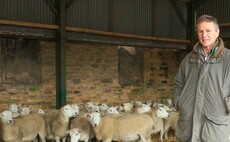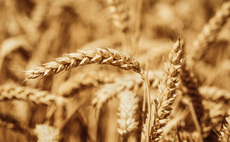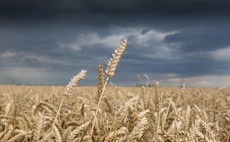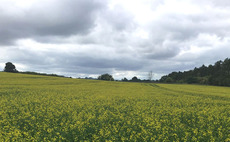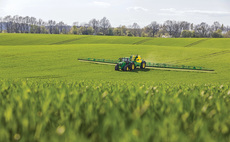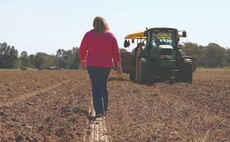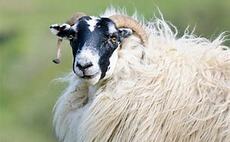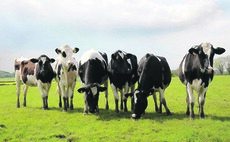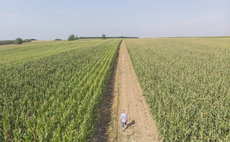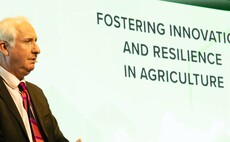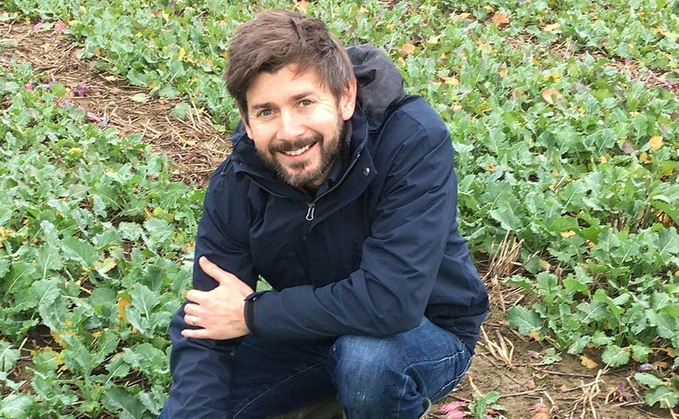
While research is intensifying into producing detailed grower guidance for cabbage stem flea beetle (CSFB) in oilseed rape, experts are providing advice for dealing with it this year.
Dr Sacha White, senior entomologist with ADAS, is part of a three-year project looking at cabbage stem flea beetle (CSFB), funded by AHDB and industry.
The project involves Harper Adams University and companies including BASF and will pick up where previous research left off in providing more detailed information and, it is hoped, lead to a grower guide on future strategies.
Current crop
With regards to this year's oilseed rape crop, Dr White says establishment went well.
"For most growers, establishment has been a lot better and adult flea beetle damage has been lower.
Weather has been critical and the previous research project identified factors such as good rainfall in August and after drilling as important, and that happened," he says.
"Also, there was a lot of early sown OSR.
Our research showed there is increased damage if the CSFB migration was at or before emergence.
In 2020, a lot of crops were well ahead of emergence when the flea beetle arrived.
"The picture on larval pressure is mixed and we should not be complacent.
Damage from larvae can be just as impactful as that from adults.
If you lose a crop to larval damage there are fewer options to recoup your position.
While the early drilling will have helped reduce adult damage, it may mean there are higher larval loads and this needs to be closely monitored."
Management
As far managing the crop this spring is concerned, Dr White says careful monitoring is crucial.
"Interventions are fairly limited.
Growers will be wondering whether to continue to invest in their crop and I would advise close monitoring of larval pressures.
"The weather has been cold and wet so far which does not encourage larvae, but we need to watch the situation, particularly if it warms up.
It is difficult to make firm recommendations as we do not know how to predict what larval pressure there will be and how it affects yields.
These are the things we are trying to find out.
Damage
"There are clearly conditions under which crops are able to tolerate larval damage quite well, but we don't have the data to understand what governs this tolerance.
For example, varieties with good spring vigour may simply be able to grow away from the damage." Clare Tucker, business development manager, emphasises the fact that the disastrous crop in 2020 was mainly down to weather rather than CSFB.
She says: "Yields were very poor at about 2.8 tonnes per hectare.
It would be easy to put that all down to CSFB, but science shows the major cause was weather, starting with poor autumn establishment followed by a very wet winter.
"Where growers can control moisture by maximising drainage and drilling into moist soil they should.
"Larval pressure this year could be just as great but the crops in the ground are much better rooted.
"Where there is some larval pressure then we would suggest early application of nitrogen around the end of February/ beginning of March to aid stem and root development." Ms Tucker says a plant growth regulator (PGR) can make sense to reduce lodging.
"Growers should monitor crops during stem extension as larvae weaken the stems and increase lodging risk.
It's important to ensure normal development and possibly hold off putting the PGR on until yellow bud, just depending on how well it is developing.
Our PGR, Caryx®, will shorten the stem and thicken it, but we would not recommend it where the main stem isn't growing away well.
"Given the new circumstances we are operating under, patient crop monitoring before making decisions will be vital.
"Growers are understandably in a quandary because we do not have enough knowledge, which is why the ADAS research is vital.
"We have worked extensively with ADAS in the past to develop our understanding of OSR.
Having a sound understanding of the crop can help us overcome problems such as this when they arise."
"Where growers can control moisture by maximising drainage and drilling into moist soil they should"
Clare Tucker
Research
The current research project is the second involving ADAS.
The report from the first project - Integrated pest management of cabbage flea beetle in oilseed rape - can be downloaded from AHDB.
Dr White says: "The last project was successful at identifying some strategies.
These include using volunteer OSR as a trap crop for adult flea beetles.
Also, it showed the importance of moisture at key points.
"We suspect plants can tolerate 50 per cent area loss, if not more, if they are robust and in good growing conditions Where we have seen significant losses is where migration has coincided with drought.
"There are a range of other strategies which have emerged, including adjusting sow dates and use of companion crops." However, pyrethroid resistant CSFB remains a major challenge and the current project is designed to add deeper understanding with the intention of developing better guidance for growers.
This will include understanding which control methods work best together.
Dr White says: "The project is being delivered by ADAS and Harper Adams and there are two parts.
The first is to have a better understanding of the biology of the pests, which will help to better predict aspects such as migration, larval invasion and impact.
The second is testing a range of non-chemical control methods.
"There are also trials being carried out by partners, such as BASF.
Ultimately, we should get a better overview of options and how they fit into an integrated pest management plan." Several breeder companies are carrying out varietal trials.
Strategies
"Varieties can have traits that reduce damage - such as by being less palatable - or by being suited to a sow date that allows them to avoid the flea beetle.
Alternatively, they may have traits that increase tolerance to damage," says Dr White.
"Breeder companies are running trials on theirs and competitors' varieties.
Some of the breeders, including BASF, are looking at how their varieties work in conjunction with other management strategies."

From now on we will Champion OSR Together.
>>To find out more about the BASF OSR initiative, visit




